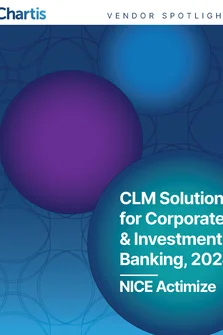<p>Financial crime flourishes in an economic downturn. Individuals facing economic hardship are more inclined to become involved in financial scams for personal gain. In addition, technological and product developments, especially in the form of online and electronic transactions, are creating new opportunities for criminal activity.</p>
<p> </p>
<p>The move to offer banking facilities via mobile phones, for example, is providing opportunities for fraud since anti-virus and anti-malware for mobiles are not as well developed as they are for desktop computers. However, reliance on outdated technology can also leave an organization vulnerable to attack. Criminals are becoming increasingly sophisticated in their approach to fraud and will exploit any weaknesses or loopholes that they find.</p>
<p> </p>
<p>Consequently, financial crime is on the rise with losses due to fraudulent behavior growing. Identity theft, check and card fraud and online banking fraud have tended to increase year on year. A growing sophistication among criminals has led to the use of phishing, pharming, Trojans and malware to steal passwords. In the US, in 2010, phishing and Trojan viruses caused banks to lose around $250m. In the UK, phishing attacks were up 21% on 2009 levels in 2010.</p>
<p> </p>
<p>Financial organizations, regulators and technology vendors have stepped up to the challenge. Over the next few years, financial institutions (FIs) around the world will be making strategic investments in financial crime risk management solutions and Chartis forecasts that the global market for financial crime risk management technology will grow to $4.3bn by 2013.</p>
<p> </p>
<p>New regulatory requirements are especially focused around anti-money laundering and anti-fraud measures, with more initiatives expected to follow. AML vendors have begun adapting their behavior monitoring technology to produce anti-fraud products too.</p>
<p> </p>
<p>Winning solutions will incorporate features such as integrated AML/anti-fraud platforms and centralized management and reporting systems, as well as real time transaction monitoring. Chartis also believes that using real-time analytics, it should be possible to predict accurately and successfully prevent the first criminal attack on a financial institution, rather than the second or third.</p>
<p> </p>
<p>This report covers the 10 financial crimes most likely to be perpetrated in 2011-12, trends in financial crime risk management solutions, regulatory developments and FI approaches to fraud and AML. It also explores the competitive landscape for financial crime risk management technology. The report positions the leading technology vendors: 3i-infotech, 41st Parameter, Accuity, ACI Worldwide, Detica NetReveal, EastNets, Equifax, Experian, FICO, Fircosoft, FIS, Fiserv, IBM, ID Analytics, Intellinx, Iovation, Jack Henry, Logica, Memento, NICE Actimize, Oracle, RSA, SAS, SunGard, Temenos and Wolters Kluwer.</p>
Only users who have a paid subscription or are part of a corporate subscription are able to print or copy content.
To access these options, along with all other subscription benefits, please contact info@risk.net or view our subscription options here: http://subscriptions.risk.net/subscribe
You are currently unable to print this content. Please contact info@chartis-research.com to find out more.
You are currently unable to copy this content. Please contact info@chartis-research.com to find out more.
Copyright Infopro Digital Limited. All rights reserved.
As outlined in our terms and conditions, https://www.infopro-digital.com/terms-and-conditions/subscriptions/ (point 2.4), printing is limited to a single copy.
If you would like to purchase additional rights please email info@chartis-research.com
Copyright Infopro Digital Limited. All rights reserved.
You may share this content using our article tools. As outlined in our terms and conditions, https://www.infopro-digital.com/terms-and-conditions/subscriptions/ (clause 2.4), an Authorised User may only make one copy of the materials for their own personal use. You must also comply with the restrictions in clause 2.5.
If you would like to purchase additional rights please email info@chartis-research.com


